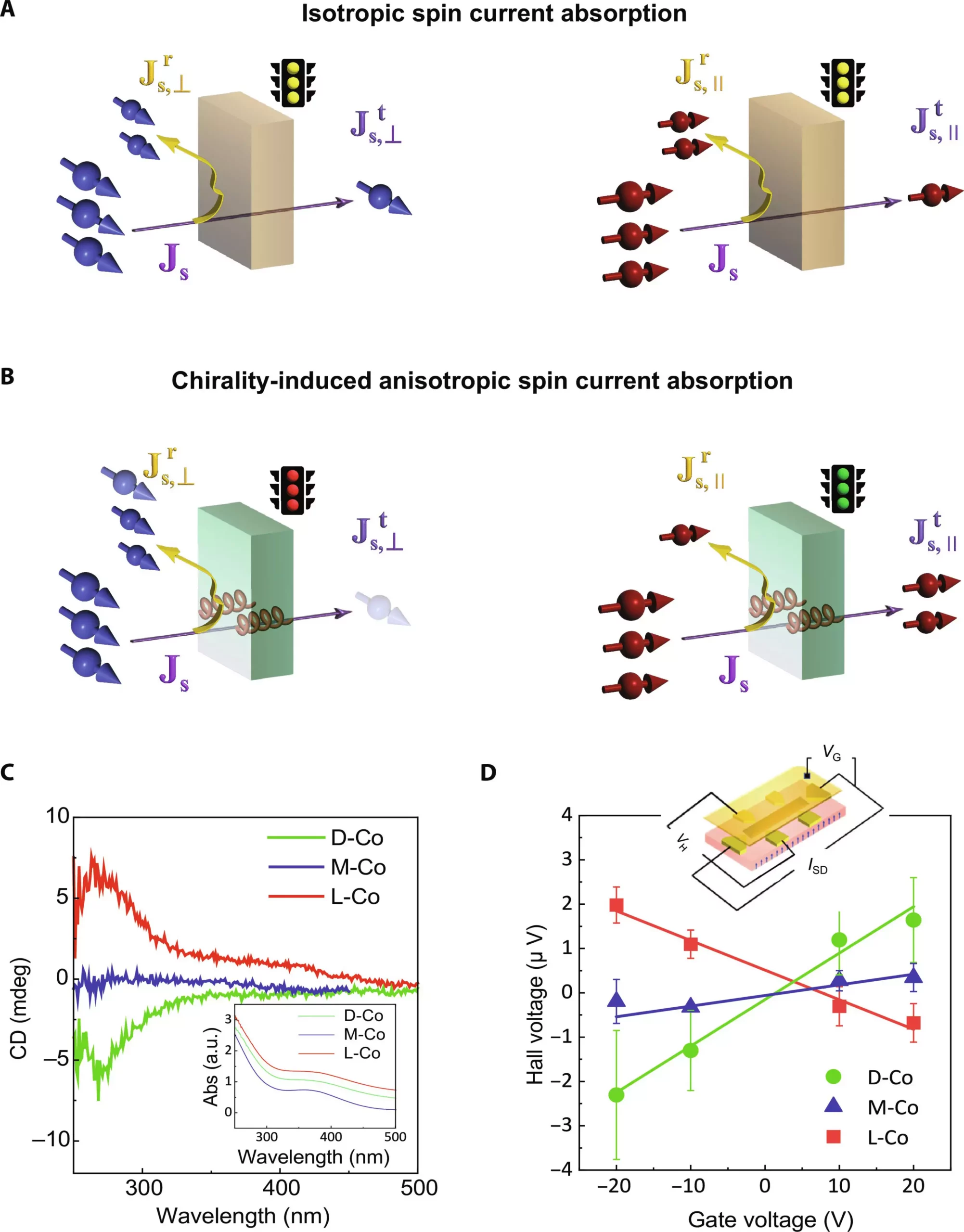A recent study conducted by researchers from North Carolina State University and the University of Pittsburgh delved into the movement of spin information of an electron, known as pure spin current, through chiral materials. The findings of the study revealed that the direction in which spins are introduced into chiral materials significantly influences their ability to traverse through them. This discovery opened up potential opportunities for the development of energy-efficient spintronic devices that can be utilized in data storage, communication, and computing applications.
Spintronic devices differ from traditional electronic devices as they leverage the spin of an electron rather than its charge to generate current and transmit information. By eliminating the need to move the associated charge, spintronic devices have the potential to operate with reduced energy consumption, thus addressing the common issue of electronic devices heating up during prolonged use. This key principle drove the researchers to explore the behavior of spin information in chiral materials for future device design and optimization.
Chiral solids, characterized by their inability to be superimposed on their mirror image, offer unique properties that can be harnessed in spintronics. Just like a left-handed glove does not fit on a right hand and vice versa, chiral materials possess asymmetrical structures that allow researchers to manipulate and control the direction of spin within the material. Prior to this study, it was believed that the chirality of a material played a crucial role in determining how spin information would propagate through it.
Through the use of two distinct methods – microwave particle excitation and ultrafast laser heating – the researchers injected pure spin into selected chiral materials to observe the behavior of spin polarization in relation to the chiral axis. Surprisingly, the absorption of spin current was found to be heavily dependent on the angle between the spin polarization and the chiral axis. When the spin was aligned perpendicular to the material’s chiral axis, it did not successfully traverse through the material. However, alignment parallel or anti-parallel to the chiral axis resulted in a remarkable 3000% improvement in the absorption and transmission of spin information.
The implications of these findings are significant as they pave the way for the development of chiral gateways in electronic devices, where spin can only pass through in a single direction. This potential advancement in spintronic technology challenges existing beliefs about the relationship between chiral materials and the propagation of spin, opening up new avenues for exploration and innovation in the field. The research was published in Science Advances with contributions from various members of the research team, highlighting the collaborative effort in unraveling the mysteries of spin information in chiral materials.


Leave a Reply